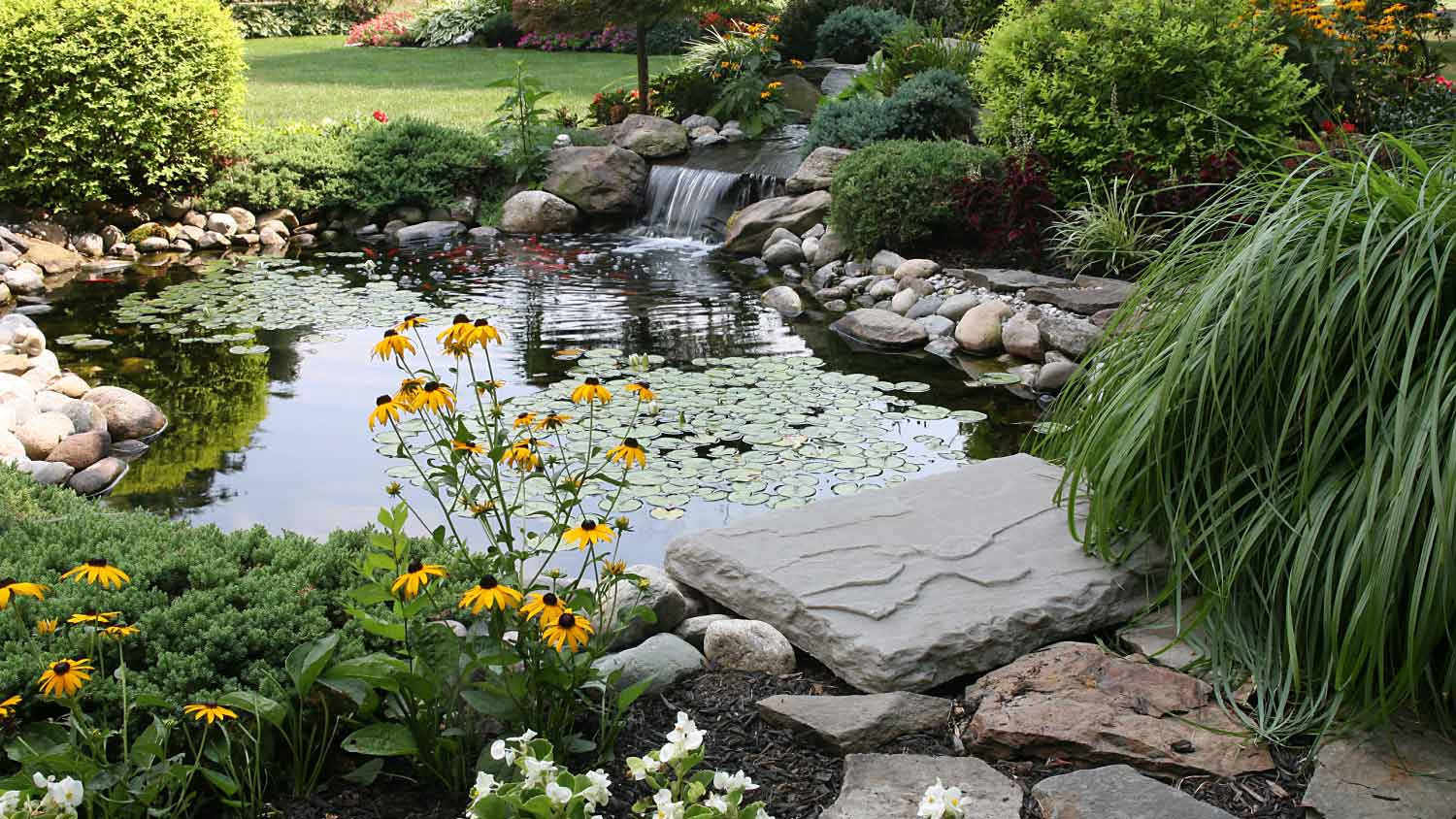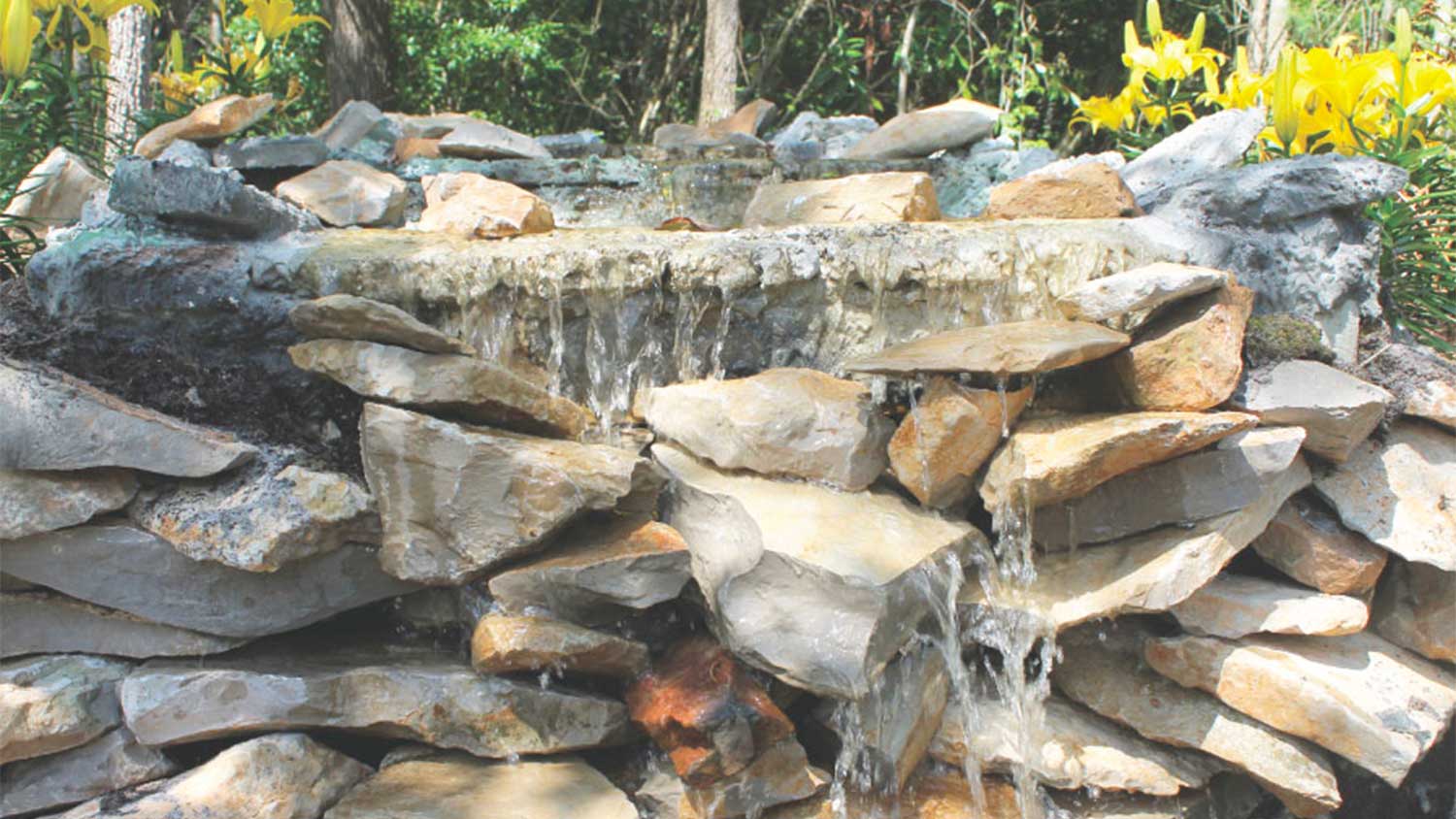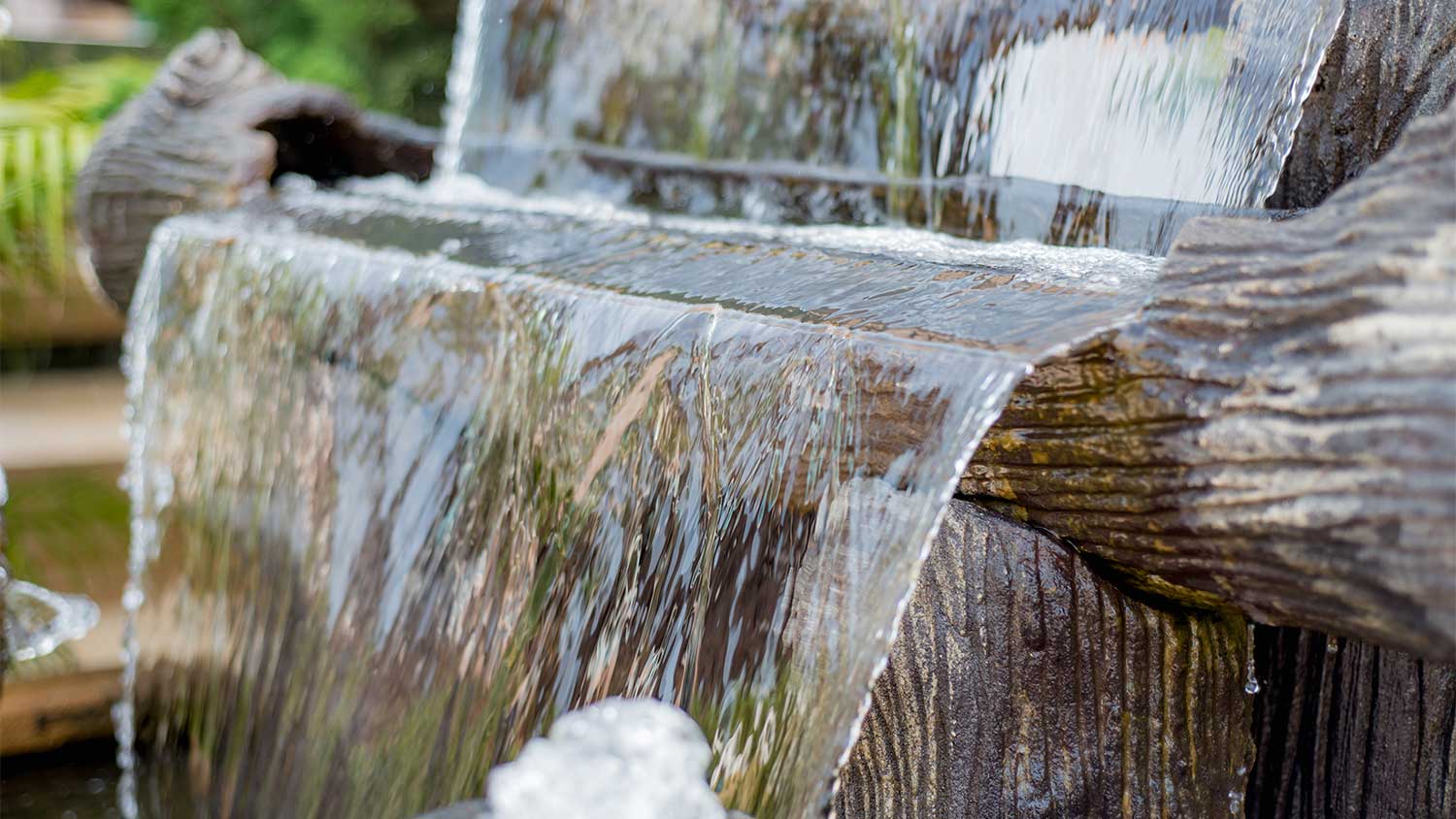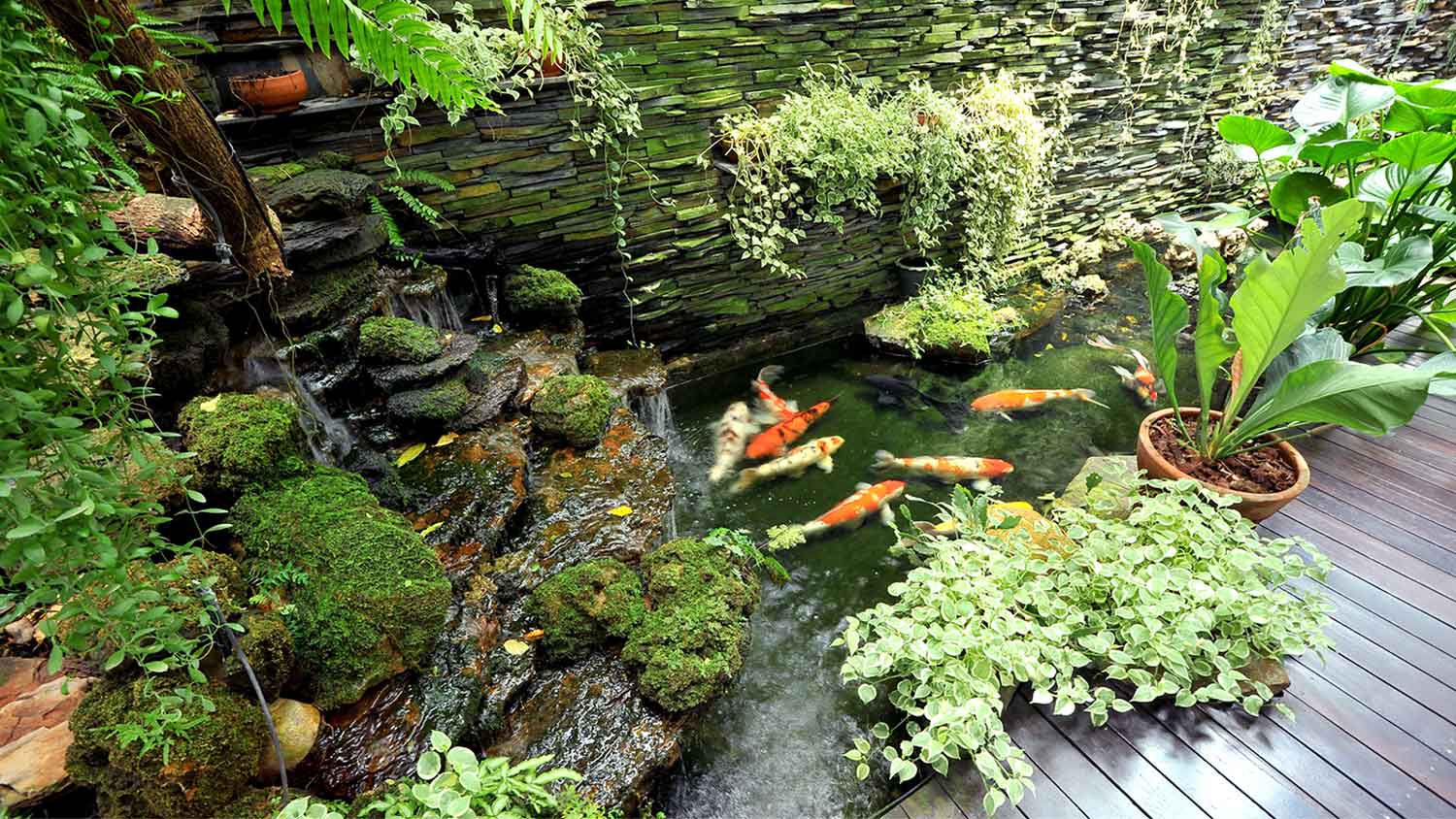
Discover how much it costs to build a pond. Learn about average prices, cost factors, and tips to plan your backyard pond project with confidence.
An outdoor water fountain can make your backyard a calm, restful oasis


When designing your outdoor space, you can incorporate several water feature ideas into the landscape. Outdoor water fountains are a great way to add interest and movement to your property, bringing serenity to spaces with their gentle splashing and eye-catching beauty. To keep your fountain working properly and looking great, use these 10 simple tips to perform regular outdoor fountain maintenance.
The most important step for keeping your fountain in good working order is to clean the basin every one to three months and the pump once a season. To clean the basin, turn off the fountain and wipe it out using the appropriate cleaning products for the fountain’s material. This will remove dirt, debris, and buildup affecting your fountain’s performance. Clean the pump once a season according to the manufacturer’s instructions to remove blockages and buildup.
| Material | Recommended Cleaning Supplies |
|---|---|
| Ceramic | Soapy water and a soft cloth or sponge |
| Stainless steel | Stainless steel cleaner and a soft, dry cloth |
| Copper | Mild soap and furniture polish |
| Stone | Mild dish soap, water, and a soft-bristle brush |
| Fiberglass or resin | Soft cloth and mild dish soap |
| Wood | Soapy water and a soft cloth or sponge |
If your fountain’s water level is too low, it can damage the pump and significantly reduce the life span of your fountain. When the pump isn’t fully submerged, it may overheat because a constant flow of water through the pump is necessary to draw heat away from it and reduce friction. Evaporation and splashing will lower the water level over time, so be sure to check the water level regularly and keep the water topped off as needed. Keeping the water at an appropriate level will also help ensure water circulates properly, discouraging bacteria and algae growth.
Algae growth is a common problem for outdoor fountains due to the moisture content and amount of sunlight that most fountains receive. Regular cleaning will help curtail algae growth, but adding an approved algae control product to the water can make a big difference. When considering any water additive for your outdoor fountain, check with the manufacturer for the appropriate product and use caution if you have pets or kids. When building a fountain, consider setting it up in a more shaded area to slow algae growth, as it thrives in direct sunlight.
Even if you’re wiping the fountain bowl every one to three months as recommended, you should empty and clean it every six months. You’ll need to remove all the water and any decorative materials, like rocks, from the bowl and get into any hard-to-reach places with your non-abrasive cloth and approved cleaner. Make sure to thoroughly rinse the cleaner off at the end so the chemicals don’t end up in the pump.
A big part of outdoor fountain maintenance is ensuring the pump works properly. If the pump begins to experience a malfunction or is damaged, it can cause significant damage to the fixture and may require replacement. Once a month, check your fountain for any of these signs of a malfunctioning pump:
Reduced water pressure
Inconsistent or sputtering water flow
Grinding, rattling, humming, or clicking sounds
If you notice any of these signs, contact a local water feature contractor to service the pump and get your fountain working its best before the damage becomes severe enough that the pump needs replacing.
While it may seem easier to fill your water fountain from the hose or the tap, the minerals found in tap water can clog the fountain’s pump and leave white scale buildup in the basin. Distilled water is free of minerals and sediment that can leave deposits, and it is a good choice to prolong the life of your fountain and keep the pump working optimally. Distilled water can also slow the growth of biofilm, a slimy substance containing high levels of bacteria that can form on the water’s surface and build up on the fountain's basin.
If leaves and sticks end up in the fountain, they can clog the pump. While you won’t be able to stop every falling leaf from ending up in the fountain, you can trim and maintain the foliage surrounding your fountain to prevent a deluge of leaves, especially during the fall.
In areas where temperatures drop below freezing, you’ll need to take additional steps to winterize your fountain and protect it from damage from freezing weather. The most effective way to winterize your fountain is to move it indoors to an area that always remains above freezing, but this may not be possible with larger fountains. In that case, prepare the fountain by draining it fully, cleaning the basin and pump, detaching the pump and bringing it indoors, and covering the fountain with an insulating, weather-resistant cover.
Harsh chemicals or abrasive cleaners can damage the finish on the fountain basin, so it’s best to avoid them when you’re performing fountain maintenance. Some warm, soapy water will do the trick for most fountains, but you can also look into mild cleaners. If the basin is stainless steel, you can use a stainless steel cleaner.
Your fountain needs maintenance year-round, but it’ll also require special care each season. We’ve addressed how to winterize a fountain, but here’s what to pay attention to during the rest of the year.
Spring is the time for your fountain to shine after it’s been hidden away for the winter. Give it a thorough cleaning to remove dirt and debris, refill it, test the pump, and add a preventive algae treatment.
Summer’s scorching heat can cause the water in your fountain to evaporate much faster, and too-low water levels can damage the pump. During the summer, check the water level frequently and top it off as needed.
While autumn foliage is beautiful to look at, fallen leaves, pine needles, and other debris can clog your fountain and contaminate the water, accelerating algae growth. Clear your fountain of any debris regularly throughout the fall to keep it looking great and functioning properly.
Keeping your fountain in top condition can be a fairly involved process. If you find it difficult to keep up with your outdoor fountain maintenance, a fountain installer or pond maintenance company can service your fountain. The average cost for professional fountain maintenance can range between $50 and $150 per month. Professional fountain service will not only take this task off your to-do list but can help keep your fountain looking and working great for years to come.
From average costs to expert advice, get all the answers you need to get your job done.

Discover how much it costs to build a pond. Learn about average prices, cost factors, and tips to plan your backyard pond project with confidence.

You may need to fill in a backyard pond to reclaim your yard or to remove an eyesore. Learn how much it costs to remove a pond and what affects the price.

Discover the cost to install a fountain in your pond, including average prices, key cost factors, and tips to save money on your pond fountain installation.

Outdoor water feature ideas are just as unique as your backyard itself. Check out how a waterfall, fountain, or koi pond can reimagine your property.

Discover how much it costs to install a pondless waterfall, including average prices, key cost factors, and tips to save on your water feature project.

Wondering how much it costs to build a koi pond? Discover prices, cost factors, and tips to plan your dream backyard pond.